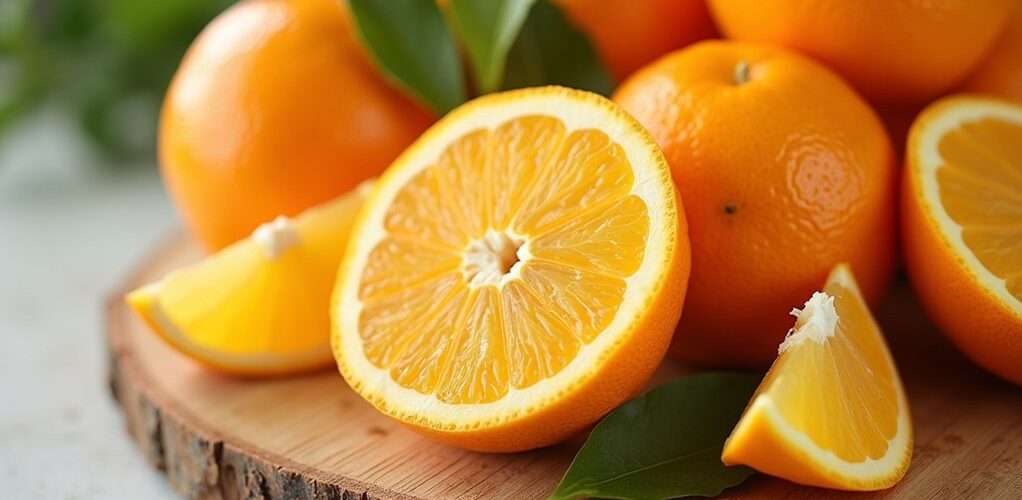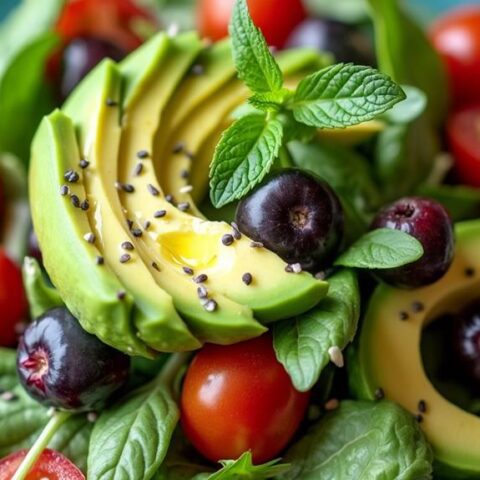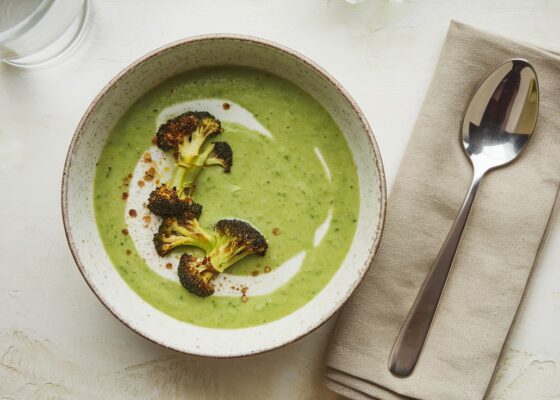
Cuties mandarins are not considered low-carb fruits, containing 7.7g net carbs per fruit, which can quickly impact daily carb limits on restrictive diets. While they offer beneficial nutrients like vitamin C, fiber, and antioxidants, their carbohydrate content requires careful portion control, especially for those following ketogenic or strict low-carb protocols. Alternative fruits like raspberries (4.6g net carbs per 100g) or avocados (1.3g net carbs per half) provide more suitable options for carb-conscious individuals, though strategic planning allows for occasional Cutie enjoyment.
Key Takeaways
- Cuties are not considered low-carb, containing 7.7g net carbs per fruit, which can quickly add up in restricted carbohydrate diets.
- Compared to truly low-carb fruits like avocados (1.3g) and berries (4.6-5.1g), Cuties have significantly higher net carb content.
- One Cutie mandarin contains about 9g total carbs and 1.3g fiber, making it challenging for those following strict keto diets.
- Those on moderate low-carb diets (50g daily limit) can enjoy 2-3 Cuties, while keto dieters should limit or avoid them.
- Despite carb content concerns, Cuties provide valuable nutrients including vitamin C, antioxidants, and potassium for overall health benefits.
Understanding Cuties: A Sweet Citrus Profile
In the world of portable citrus fruits, Cuties® mandarins stand out as a popular choice for health-conscious consumers seeking a convenient and naturally sweet snack. These small, seedless citrus fruits pack significant nutritional value, containing approximately 45 calories and 48.8mg of vitamin C per fruit, supporting immune system function. While Cuties offer convenience through their easy-to-peel nature and portable sizing options, their carbohydrate content requires careful consideration for those following low-carb diets. Each mandarin contains about 9g of total carbs, with net carbs reaching 7.7g after accounting for fiber content. This relatively high carbohydrate profile makes them challenging to incorporate into strict low-carb or ketogenic meal plans, despite their otherwise beneficial nutritional properties and practical packaging formats. Stabilized insulin levels help reduce hunger and cravings, promoting appetite regulation, which is crucial for those following a ketogenic diet.
The Carb Content of Cuties: Breaking Down the Numbers
Understanding the carbohydrate composition of Cuties® mandarins requires careful attention to their nutritional breakdown, particularly for individuals monitoring their carb intake. A single Cuties® contains approximately 9g of total carbs, with net carbs measuring around 7.7g after subtracting dietary fiber.
While these citrus fruits offer valuable nutrients like vitamin C, their natural sugars and carb content pose challenges for those following a low-carb diet.
For individuals adhering to strict low-carb diets with daily limits between 20g and 50g of net carbs, consuming even one Cuties® represents a substantial portion of their allowance.
Multiple Cuties® could quickly exceed daily carb targets, potentially disrupting ketosis for those following ketogenic protocols, making them a less suitable choice for stringent carb-restricted eating plans.
Net Carbs vs. Total Carbs in Cuties
The distinction between net carbs and total carbs becomes particularly relevant when examining Cuties® mandarins in detail. While these popular citrus fruits contain approximately 9g of total carbs, their net carb content stands at 7.7g after subtracting fiber, which greatly impacts daily carb allowances for those following restricted diets.
For individuals seeking low-carb fruit alternatives, this difference proves essential when planning meals and snacks.
Though Cuties offer beneficial vitamin C and other nutrients, their net carb content makes them a challenging choice compared to options like avocados or strawberries.
Understanding these numbers helps consumers make informed decisions about incorporating Cuties into their carb intake limits, particularly when following ketogenic or low-carb dietary protocols that typically restrict daily net carbs to 20-50 grams.
Comparing Cuties to Other Low-Carb Fruits
When comparing Cuties® mandarins to other fruit options suitable for low-carb diets, several alternatives emerge as more favorable choices. With 7.7g of net carbs per fruit, Cuties can considerably impact daily carbohydrate intake for those following strict low-carb protocols.
More suitable low-carb fruits include strawberries, which contain 8.2g of net carbs per full cup, and avocados, offering just 1.3g of net carbs per half fruit.
Berries present excellent alternatives, with raspberries and blackberries containing 4.6g and 5.1g of net carbs per 100g, respectively.
For individuals concerned about maintaining ketosis, olives provide a particularly advantageous option at 4.5g net carbs per cup, while also delivering beneficial fats that align with low-carb dietary goals.
Additionally, insulin sensitivity is crucial when choosing fruits, as it can impact how effectively the body manages blood sugar levels, especially for those adhering to low-carb and ketogenic diets.
Health Benefits Beyond the Carb Count
While Cuties contain a moderate amount of carbohydrates, their impressive array of antioxidants helps protect cells from damage and may reduce the risk of various chronic conditions.
Their high vitamin C content supports immune system function, making them particularly beneficial during cold and flu seasons.
The potassium in these small citrus fruits contributes to cardiovascular health by helping regulate blood pressure and supporting proper heart function.
Antioxidant Protection for Health
Beyond their low-carb appeal, Cuties mandarins pack a powerful antioxidant punch that supports overall health and wellness. Each fruit delivers approximately 48.8 mg of vitamin C, which strengthens immune function while helping to combat oxidative stress throughout the body.
The combination of flavonoids and carotenoids provides additional protection against chronic diseases, working synergistically to enhance overall health benefits.
These small citrus fruits contribute to digestive health through their fiber content, promoting better nutrient absorption and supporting beneficial gut bacteria.
With 177 mg of potassium per serving, Cuties also support cardiovascular function by helping regulate blood pressure.
Regular consumption may even benefit skin health by neutralizing free radicals that contribute to cellular aging, making these fruits a thorough choice for health-conscious individuals.
Immune System Support Benefits
The immune-boosting properties of Cuties® mandarins stand at the forefront of their nutritional profile. Each fruit delivers a substantial 48.8 mg of vitamin C, which plays an essential role in supporting immune function and defending against common illnesses. The antioxidants present in these citrus fruits actively combat oxidative stress, enhancing the body's natural immune response while reducing inflammation.
Beyond direct immune support, Cuties® contribute to overall health through multiple pathways. Their vitamin C content improves the absorption of iron from plant-based foods, helping prevent anemia and maintain strong immune defenses.
Additionally, their natural sweetness and invigorating qualities make them an appealing choice for healthy eating habits, which are fundamental to maintaining robust immune system performance. The combination of these nutritional benefits makes Cuties® an effective addition to an immune-supporting diet.
Heart-Healthy Citrus Properties
Despite their compact size, Cuties® mandarins pack substantial cardiovascular benefits that extend far beyond their low carbohydrate content. These citrus fruits contain potassium, which plays an essential role in maintaining healthy blood pressure levels and supporting overall heart health.
Their rich vitamin C content, combined with natural antioxidants, helps reduce inflammation and protects against cardiovascular disease.
For those mindful of their weight management goals, Cuties offer an ideal snacking solution, as they're low in net carbs and calories while providing satisfying natural sweetness.
The fiber content helps regulate blood sugar levels, making them a smart choice for cardiovascular wellness. This combination of nutrients and protective compounds makes Cuties an excellent addition to a heart-healthy diet, offering multiple benefits in a convenient, portion-controlled package.
Fitting Cuties Into Different Low-Carb Diet Plans
Integrating Cuties into low-carb diet plans requires careful consideration of daily carbohydrate limits and specific dietary goals. With 7.7g of net carbs per fruit, Cuties can quickly consume a substantial portion of daily carb allowances, particularly for those following strict ketogenic protocols. Achieving ketosis typically requires strict adherence to low carbohydrate intake, which is essential for the body to switch from burning glucose to fat for energy.
| Diet Type | Daily Net Carb Limit | Cuties Allowed |
|---|---|---|
| Standard Low-Carb | 50g | 2-3 per day |
| Moderate Low-Carb | 20-30g | 1-2 per day |
| Strict Keto | Under 20g | Limited/Avoid |
For those following less restrictive low-carb plans, portion control enables occasional Cutie consumption while maintaining dietary goals. However, individuals on stricter protocols may need to opt for lower-carb alternatives like berries, avocados, or olives to stay within their daily limits while still enjoying nutritious snacks.
Portion Control Strategies for Cuties
Successfully managing Cuties consumption while following a low-carb diet requires strategic portion control techniques and careful monitoring.
With 7.7g of net carbs per Clementine, these sweet citrus fruits can quickly impact daily carb limits, particularly for those following strict low-carb diets. Understanding portion sizes and implementing effective control strategies helps individuals maintain their carb intake goals while still enjoying these nutritious fruits.
- Measure daily carb allowance and subtract the 7.7g from Cuties first before planning other meals
- Pair one Clementine with protein-rich, low-carb foods like cheese or nuts to create a balanced snack
- Pre-portion Cuties into single-serving containers to avoid mindless overconsumption
These portion control strategies enable individuals to incorporate Cuties into their low-carb lifestyle without compromising their dietary goals or exceeding their daily carb limit.
Best Times to Enjoy Cuties on a Low-Carb Diet
When incorporating Cuties into a low-carb eating plan, timing plays a crucial role in maximizing their nutritional benefits while managing carbohydrate intake effectively. The ideal moments to enjoy these vitamin C-rich fruits align with specific daily activities and nutritional needs. Regular monitoring of blood sugar and ketones is crucial during the keto diet adjustment phase to avoid hypoglycemia.
| Time of Day | Benefits | Portion Suggestion |
|---|---|---|
| Post-Workout | Enhanced recovery | 1 Cutie |
| With Meals | Better blood sugar control | 1/2 Cutie |
| Mid-Morning | Sustained energy | 1 Cutie |
| Pre-Exercise | Natural hydration | 1/2 Cutie |
| Evening Snack | Mindful portion control | 1/2 Cutie |
For those following a low-carb diet, consuming Cuties as part of a balanced meal or after physical activity helps enhance their nutritional value while maintaining daily carbohydrate limits. Pairing these citrus fruits with protein or healthy fats can further support blood sugar management.
Alternative Low-Carb Citrus Options
For those seeking to reduce their carbohydrate intake while maintaining the nutritional benefits of citrus fruits, several compelling alternatives to Cuties offer lower net carb content while delivering essential vitamins and minerals.
When looking for low-carb snacking options, fruits like strawberries and raspberries provide satisfying sweetness with noticeably fewer net carbs, making them excellent choices for those monitoring their carbohydrate consumption.
Additionally, non-traditional citrus alternatives such as avocados and olives deliver essential nutrients while keeping net carbs minimal.
Avocados and olives make excellent low-carb choices, packing vital nutrients without the higher carbohydrate content found in traditional citrus fruits.
- Strawberries contain 8.2g of net carbs per cup, offering a sweet alternative with vitamin C
- Raspberries provide only 4.6g of net carbs per 100g, plus beneficial antioxidants
- Watermelon can be enjoyed moderately with 11g of net carbs per cup, perfect for summer refreshment
Avocados are not only low in carbs with just 1.5 grams of net carbs per fruit but are also rich in monounsaturated fats that promote heart health.
The Glycemic Impact of Cuties
Cuties clementines present a notable glycemic challenge for low-carb dieters, with their 7.7g net carb content per fruit triggering a moderate blood sugar response that can affect ketosis maintenance. The digestible carbohydrates in these small citrus fruits interact with insulin production, potentially causing blood glucose fluctuations that may concern those monitoring their metabolic state. Understanding the glycemic impact becomes particularly relevant when considering that a single Cutie can consume up to 38% of a strict low-carb dieter's daily 20g carbohydrate allowance, making portion control essential for blood sugar management. It's important to note that individual responses to carbohydrate intake can vary significantly, similar to how they vary when following the keto diet, necessitating personalized dietary approaches for optimal results.
Blood Sugar Response Analysis
Understanding the glycemic impact of clementines requires careful consideration of their carbohydrate composition and blood sugar effects. With 7.7g of net carbs per serving, clementines have a moderate effect on blood glucose levels. Their glycemic index of 40 indicates a slower absorption rate compared to higher-GI foods, while their fiber content of 1.3g per fruit helps regulate blood sugar response.
For individuals following low-carb diets, monitoring personal responses is essential, as effects can vary between people.
- The fiber-to-carb ratio helps buffer blood sugar spikes
- Individual glucose responses may differ based on metabolic factors
- Regular blood sugar monitoring can determine personal tolerance levels
Given these factors, clementines can be incorporated into low-carb diets with careful portion control and individual blood glucose monitoring.
Net Carb Content Breakdown
Breaking down the net carb content of these popular citrus fruits reveals significant implications for low-carb dieters. While Cuties® offer valuable vitamin C and other nutrients, their carbohydrate profile requires careful portion control for those monitoring their intake. Using the formula of total carbs minus fiber, each Cutie contains approximately 7.7 grams of net carbs.
| Metric | Value |
|---|---|
| Total Carbohydrates | 9.0g |
| Dietary Fiber | 1.3g |
| Net Carbs | 7.7g |
| Daily % (20g diet) | 38.5% |
| Daily % (50g diet) | 15.4% |
This breakdown demonstrates that even a single Cutie can constitute a substantial portion of daily carbohydrate allowances on low-carb diets, particularly for those following stricter protocols or aiming to maintain ketosis.
Insulin Impact Factors
While the net carbohydrate content of Cuties presents one consideration for low-carb dieters, their impact on insulin levels adds another vital dimension to their dietary profile.
Although Cuties have a relatively low glycemic index, their natural sugars can trigger varying insulin responses, particularly when consumed without protein or fat. For those following low-carb diets, monitoring portion sizes becomes important to maintain metabolic health and ketosis.
- Individual metabolic responses to Cuties can differ greatly based on overall diet and insulin sensitivity.
- Pairing Cuties with protein or healthy fats can help stabilize blood sugar levels.
- Strategic portion control helps manage the 7.7g net carbs per serving while minimizing insulin impact.
These factors make careful consideration of Cuties' consumption vital for those managing carbohydrate intake and insulin levels.
Seasonal Availability and Selection Tips
When shopping for Cuties® mandarins, timing plays a crucial role in finding these sweet, easy-to-peel citrus fruits at their peak freshness. These popular mandarins are available in grocery stores from November through April, with different varieties appearing throughout the season.
| Month | Variety | Selection Tips |
|---|---|---|
| November | Clementine | Firm, heavy fruit |
| December | Clementine | Bright orange skin |
| January | Clementine | No soft spots |
| February | Tango/W. Murcott | Glossy appearance |
| April | Tango/W. Murcott | Fresh, clean scent |
For maximum freshness, select mandarins that feel heavy for their size and display a vibrant orange color. Avoid fruits with visible damage or mold. Store them in the refrigerator's crisper drawer for up to two weeks, or keep them at room temperature for approximately one week.
Storage Methods to Preserve Freshness
Proper storage techniques greatly extend the shelf life and maintain the quality of Cuties® mandarins.
To achieve peak freshness, these citrus fruits should be stored in the refrigerator's crisper drawer, where they can last up to two weeks. Regular checks for quality help prevent spoilage, while proper storage methods guarantee the fruit remains fresh and flavorful.
For long-term preservation, freezing Cuties® in airtight containers can extend shelf life up to six months, making them available for future use in various recipes.
- Store Cuties® in the refrigerator's crisper drawer for up to two weeks of freshness
- Keep at room temperature for about a week, away from direct sunlight and heat
- Consider freezing in airtight containers for up to six months of storage
This environmentally friendly fruit offers versatile storage options, with compostable peels supporting sustainable practices.
Creative Ways to Enjoy Cuties While Limiting Carbs
Enjoying Cuties® mandarins on a low-carb diet requires strategic planning and creative combinations to maximize flavor while managing carbohydrate intake. With 7.7g of net carbs per fruit, careful portioning and thoughtful pairings can help incorporate these sweet citrus treats into a low-carb lifestyle.
Strategic planning and portion control allow low-carb dieters to enjoy Cuties mandarins while maintaining their nutritional goals.
Health-conscious individuals can combine Cuties segments with protein-rich foods like cheese or nuts, creating satisfying snacks that balance carbohydrate content.
For a revitalizing beverage option, blend Cuties into smoothies with spinach and avocado, maintaining nutritional benefits while controlling carbs.
Those seeking low-carb dessert alternatives can utilize Cuties zest in sugar-free yogurt preparations, adding natural citrus flavor without significant carbohydrate impact.
Additionally, incorporating segments into fresh salads with leafy greens provides a burst of sweetness while keeping carbohydrates in check.
Frequently Asked Questions
Are Cuties Low in Fodmap?
Cuties have low FODMAP content when eaten in controlled portions. These citrus varieties make suitable snack alternatives for digestive health concerns, with recommended servings of 1-2 fruits maintaining safe consumption levels.
Are Cuties Low in Carbs?
Cuties aren't considered low in carbs, containing approximately 9g total carbohydrates per fruit. Despite their health benefits and convenient portion size, they require careful monitoring within low-carb dietary plans, unlike some lower-carb alternatives.
Is 3 Cuties a Day Too Much?
Three Cuties exceed typical serving size recommendations for daily fruit intake. While offering health benefits, their sugar content should be monitored. One to two Cuties better support nutritional balance for most individuals.
Can I Eat Clementines on a Keto Diet?
Clementines are not recommended on a keto diet due to their high net carb content. While offering citrus health benefits, dieters should choose low carb alternatives like berries or avocados for fruit portion control.
Conclusion
While Cuties contain natural sugars and carbohydrates, their moderate net carb content makes them a reasonable choice for those monitoring their carb intake. When enjoyed in appropriate portions, these sweet citrus fruits offer substantial nutritional benefits, including vitamin C and fiber, while keeping carbohydrate consumption in check. By incorporating Cuties mindfully into a balanced diet, individuals can satisfy their sweet cravings while maintaining their nutritional goals.










No Comments